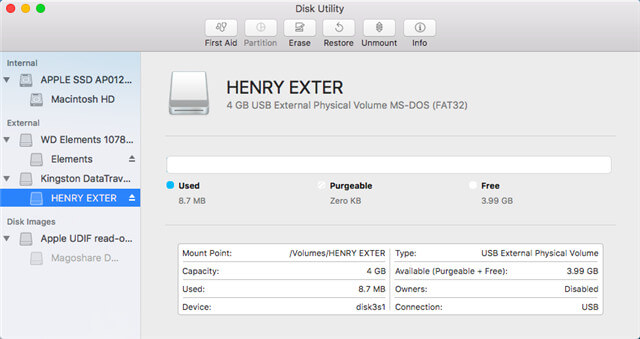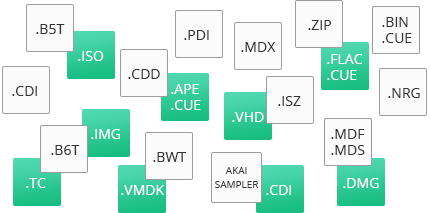Mac OS X Release Candidate - (Download #34) Zip contains both installer & developer tools. Mac OS X 10.5 Single Layer DVD - (Download #35) Basic OS install, no extras included as to fit on one DVD.

Thank you, Oona Click to expand. Disk image mounter mac Disk image mounter mac Disk image mounter mac Message was edited by: spiralgirl Message was edited by: spiralgirl Oct 28, 2007 8:08 PM Not sure how a. You will find the content ratings on every app or game page. DiskImageMounter will launch when you doubleclick an image to be mounted. Via double-click upon the ISO image in Finder, you could let the ISO image go through the auto-mounter app to mount ISO file within OS X. Make use of Disk Utility - If you failed to mount ISO file on Mac in this way, don't worry. There are also other solutions to help you mount ISO file on Mac. Set the Format type to Mac OS Extended (Journaled.) Click on the Apply button, then click on the Done button when it activates. Quit Disk Utility and return to the Utility Menu. Select Reinstall OS X and click on the Continue button. To install the version of OS X that was currently installed use Command-Option-R. Download Mount Me for Mac to appleScript to mount any disk image and/or physical disks. Download Mount Me for Mac to appleScript to mount any disk image and/or physical disks. Mac OS X 10.3.9.
I am trying to download the trial version of Photoshop Elements 6 from the Adobe website onto my iMac. However, it keeps failing because I don't have the diskimagemounter.app.
Adobe help was anything but helpful.
Hopefully someone here can help me.
Please describe in detail the exact actions and things i need to do to make this happen.
For example, someone told me to download stuffit expander. OK, THEN WHAT? I'm not really smart when it comes to computers.
I have spent a good part of a week trying different things but keep getting the same results.
I am getting frustrated. I even re-installed the Mac OS to see if it would help.
look forward to a reply.

- 4 Contributors
- forum3 Replies
- 2,088 Views
- 11 Months Discussion Span
- commentLatest PostLatest Postby rezo12345
Recommended Answers
First, you should search for DiskImageMounter.app on your hard disk. On normal installations of OS X 10.3 (Panther) and later, it will be located in /Library/CoreServices/. It it's not there, you'll have to somehow get a replacement (reinstalling OS X is usually the easiest method).
By the way, Stuffit …
Jump to PostAll 3 Replies
First, you should search for DiskImageMounter.app on your hard disk. On normal installations of OS X 10.3 (Panther) and later, it will be located in /Library/CoreServices/. It it's not there, you'll have to somehow get a replacement (reinstalling OS X is usually the easiest method).
By the way, Stuffit Expander won't work. It can open a variety of archives, but it cannot mount Mac disk images (dmg). There are some Windows utilities which can extract dmg files too, if you're interested in taking that route.
These advanced steps are primarily for system administrators and others who are familiar with the command line. You don't need a bootable installer to upgrade macOS or reinstall macOS, but it can be useful when you want to install on multiple computers without downloading the installer each time.
What you need to create a bootable installer
- A USB flash drive or other secondary volume, formatted as Mac OS Extended, with at least 12GB of available storage
- A downloaded installer for macOS Big Sur, Catalina, Mojave, High Sierra, or El Capitan
Download macOS
- Download: macOS Big Sur, macOS Catalina, macOS Mojave, or macOS High Sierra
These download to your Applications folder as an app named Install macOS [version name]. If the installer opens after downloading, quit it without continuing installation. To get the correct installer, download from a Mac that is using macOS Sierra 10.12.5 or later, or El Capitan 10.11.6. Enterprise administrators, please download from Apple, not a locally hosted software-update server. - Download: OS X El Capitan
This downloads as a disk image named InstallMacOSX.dmg. On a Mac that is compatible with El Capitan, open the disk image and run the installer within, named InstallMacOSX.pkg. It installs an app named Install OS X El Capitan into your Applications folder. You will create the bootable installer from this app, not from the disk image or .pkg installer.
Use the 'createinstallmedia' command in Terminal
- Connect the USB flash drive or other volume that you're using for the bootable installer.
- Open Terminal, which is in the Utilities folder of your Applications folder.
- Type or paste one of the following commands in Terminal. These assume that the installer is in your Applications folder, and MyVolume is the name of the USB flash drive or other volume you're using. If it has a different name, replace
MyVolumein these commands with the name of your volume.
Big Sur:*
Catalina:*
Mojave:*
High Sierra:*
El Capitan:
* If your Mac is using macOS Sierra or earlier, include the --applicationpath argument and installer path, similar to the way this is done in the command for El Capitan.
After typing the command:
- Press Return to enter the command.
- When prompted, type your administrator password and press Return again. Terminal doesn't show any characters as you type your password.
- When prompted, type
Yto confirm that you want to erase the volume, then press Return. Terminal shows the progress as the volume is erased. - After the volume is erased, you may see an alert that Terminal would like to access files on a removable volume. Click OK to allow the copy to proceed.
- When Terminal says that it's done, the volume will have the same name as the installer you downloaded, such as Install macOS Big Sur. You can now quit Terminal and eject the volume.
Use the bootable installer
Determine whether you're using a Mac with Apple silicon, then follow the appropriate steps:
Apple silicon
- Plug the bootable installer into a Mac that is connected to the internet and compatible with the version of macOS you're installing.
- Turn on your Mac and continue to hold the power button until you see the startup options window, which shows your bootable volumes and a gear icon labled Options.
- Select the volume containing the bootable installer, then click Continue.
- When the macOS installer opens, follow the onscreen instructions.
Intel processor
- Plug the bootable installer into a Mac that is connected to the internet and compatible with the version of macOS you're installing.
- Press and hold the Option (Alt) ⌥ key immediately after turning on or restarting your Mac.
- Release the Option key when you see a dark screen showing your bootable volumes.
- Select the volume containing the bootable installer. Then click the up arrow or press Return.
If you can't start up from the bootable installer, make sure that the External Boot setting in Startup Security Utility is set to allow booting from external media. - Choose your language, if prompted.
- Select Install macOS (or Install OS X) from the Utilities window, then click Continue and follow the onscreen instructions.
Learn more
Disk Image Mounter Mac Os X Download Windows 10
For more information about the createinstallmedia command and the arguments that you can use with it, make sure that the macOS installer is in your Applications folder, then enter the appropriate path in Terminal:
- Big Sur: /Applications/Install macOS Big Sur.app/Contents/Resources/createinstallmedia
- Catalina: /Applications/Install macOS Catalina.app/Contents/Resources/createinstallmedia
- Mojave: /Applications/Install macOS Mojave.app/Contents/Resources/createinstallmedia
- High Sierra: /Applications/Install macOS High Sierra.app/Contents/Resources/createinstallmedia
- El Capitan: /Applications/Install OS X El Capitan.app/Contents/Resources/createinstallmedia
Disk Image Mounter Mac Os X Download Windows
A bootable installer doesn't download macOS from the internet, but it does require an internet connection to get firmware and other information specific to the Mac model.
